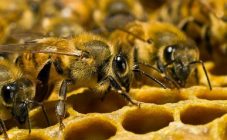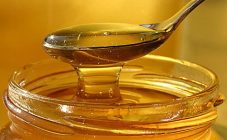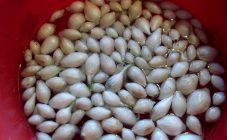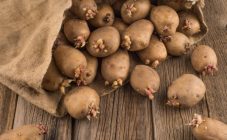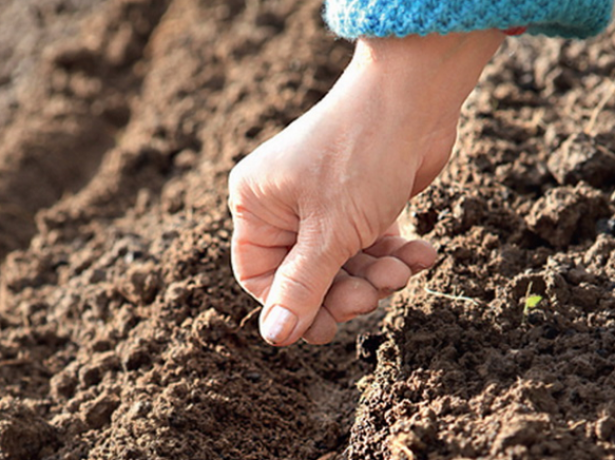Content:
Previously, beekeepers believed that preparing bees for wintering was to hide the hives in a closed room or basement, but today a new tendency has begun to be traced according to which these insects, when certain conditions are created, can stay outside in the cold season.
How to Prepare Bees for Winter - For Beginners
In order for the bees to survive the cold weather safely, they need help preparing for the winter. Beginners should especially carefully study the features of the preparatory process in order to avoid the most common mistakes.
You need to start preparing with the arrival of autumn, before the onset of cold weather. The main task is to determine the degree of readiness of the hives for winter. To correctly assess the condition, you need to pay attention to some of the nuances:
- the age of the mother, since the level of fertility of the whole family will depend on her;
- brood volume;
- the volume of honey and bee bread;
- the amount of harvested feed;
- how suitable the combs are for wintering;
- what is the state of the bee colony, are there any sick individuals.
Inspection must be carried out carefully so as not to miss details that could lead to the death of the swarm.
How bees hibernate in a multi-hive hive
Almost every beekeeper will say that wintering in a double-hive hive, or better in a multi-hive hive, is the best option, which has a lot of advantages. Namely:
- easy to use;
- it is compact and lightweight;
- it is convenient to transport it;
- it is possible to independently remove the case, in which the frame is installed without the help of an outsider;
- you can buy such hives in specialized stores, but it will be much easier and cheaper to make your own production.
The main feature is that an apiary of such a plan is an opportunity to significantly strengthen bee colonies. If you use a sun lounger, there may not be enough space, and this will affect the health and development of insects. In turn, in cramped hives, after the uterus has laid a new clutch, she begins to look for a new place, and in such conditions this is completely impossible. This leads to a decrease in the number of brood of new bees.
On average, in a multi-hull design with a 230 or 140 mm frame, new hulls will need to be gradually installed to eliminate unwanted swarming. The main difference between such a hive is the absence of the need to carry out insulation, but do not forget about the climatic conditions of the region. As for the location, they are left on the street and removed to warm places. Experts categorically do not recommend doing too much insulation in the hive in order to fully grow the brood. The pollen collected during summer and spring is left in the nest.
One bee family needs about 2 frames, in which there are both bee bread and honey, and after the end of wintering there will be an optimal amount of bee bread, sufficient for the female performing the process of laying new eggs.
How bees winter in a polycarbonate greenhouse
Few of those new to beekeeping know that an ordinary polycarbonate greenhouse can become a place for bees to winter, and this option is more suitable, competent, environmentally friendly and safe.
Among the main functions that this room performs are:
- protection from external noise, which can be a serious irritant to insects;
- shelter from sudden temperature changes, strong gusts of wind and the effects of other atmospheric phenomena;
- maintaining the optimal level of temperature and humidity;
- saving feed;
- increasing the life of the hive.
It is important to understand that the placement of insects requires proper preparation, otherwise the hibernation of bees will turn into a real hard labor. Namely: on a sunny day, the room will warm up too much, unlike cloudy days, and this will cause temperature changes. The situation is quite correctable - sheets of opaque material, for example, roofing felts or parchment, are laid on the greenhouse.
Also, to prevent sudden changes in temperature inside the structure, additional insulation must be made. This is done in September, and for this they use expanded polystyrene or sheet polystyrene.
It is important to understand that additional insulation is protection not only from frost. As soon as spring comes and the air temperature rises, the inside of the greenhouse will remain cool - this will exclude premature flight of insects. To regulate indoor heat, you can use a door and a ventilation window, and it is especially important to be extremely careful at the very beginning of the season.
Overheating is categorically contraindicated for bees; accordingly, on especially warm days it will be necessary to open the vents and doors, and close them tightly in frost, excluding the formation of drafts.
It is very important not to forget about rodent protection. For this, special metal supports are installed under the hive, and in summer they are protected with a metal mesh. If there are too many hives, then it is advisable to arrange them in 2 tiers, and houses with the strongest families are installed from below, and the rest go to the top.
How to prepare a bee colony for winter in September
Preparing bee colonies for wintering is an event without which insects will simply die, as they may freeze, get sick, or be in unsuitable conditions, by the beginning of spring they will become weak, lethargic and with low immunity, and this is unlikely to bring a large amount of honey in a new season. What to do first:
- it is required to research the norms for wintering;
- you need to study the types of winter houses and places for the location of bees in order to make their stay as comfortable as possible;
- as soon as the first heat comes, the hive is processed;
- it is imperative to have a plan according to which the layering will be carried out, which is considered one of the most important stages in the development of the bee family;
- feed is harvested only in summer, and it is important that it is of high quality;
- the main part of the work is carried out in the fall, namely, they equip wintering places, carry out treatment with chemicals that can prevent the appearance of harmful bacteria and provoke their extinction.
How to insulate a hive for wintering
What is the best way for bees to spend the winter? It is important to correctly insulate them at home, for which you can use various types of building materials. Namely, some beekeepers use:
- plywood;
- expanded clay for the bottom;
- burlap;
- straw;
- worn out warm clothes;
- polyethylene;
- polyurethane foam;
- foam, which is recognized as more popular (it is easy to work with it, it is cheaper and allows you to get an excellent effect).
Warming is carried out in stages so as not to miss an important moment:
- The nests are grouped so that the walls are less blown out, and inside the structure of the hive, the outpost frame acts as a heater.
- Outside, heaters are fastened with nails, and if the work is carried out with foam, then it can be glued to the surface of the walls of the house.
- With the help of foam or any other material, the sides and bottom are first covered (it is very important that there are no gaps), and the corners of the houses are covered with a canvas in two layers. This will 100% prevent freezing and blowing. It is strictly forbidden to sew on each side, since the upper part must have openings for natural ventilation.
- A fairly good solution would be to install the hives on special supports, for which wooden stakes or bricks 2-3 in height are suitable. This will exclude freezing from the ground and protect against attack by rodents.
- If long cold weather and severe frosts have come in winter, then walls are made of snow around the perimeter of the hives.
- After a severe blizzard has passed, each hive must be dug out, which is extremely important. Bees can survive only when there is no high humidity in their houses, therefore, leaving snow embankments before the onset of a thaw can provoke water penetration inside, and this will lead to mass death.
How to organize the wintering of bees: preparing an apiary
Preparing bees for winter is a responsible process, and the correct formation of the nest is considered an especially important stage. Work begins, as noted above, with the onset of cold weather and preferably when the insects begin to cluster into balls.
You also need to study the frames on which the food is collected, and how full they are. The calmness of insects, their immunity in winter and whether they can harm the beekeeper in preparation for winter depends on the level of filling the frames. Namely: if there are no frames with food in the vicinity of them, then this can cause the death of insects. Therefore, if the frames are not filled, then this is done manually. They are placed around the perimeter of the house.
Recommendations for the placement and formation of bee nests:
- If the family of bees is too strong, then the nests are installed only on two sides, and in the central part they put 2 frames, each of which contains at least 2 kg of honey. Next, completely filled frames are placed around the nests, 4 kg of honey each. In general, 1 hive should have at least 40 kg of honey.
- Can be placed in corners. To do this, put a frame on 1 edge, completely filled with honey, and behind it there are also frames, but with each subsequent one, the amount of food placed on it is reduced. The last one should have about 2.5 kg of feed.
- There is a placement technology called "beard", the essence of which lies in the arrangement of full-fledged frames in the central part, and frames with a decreasing amount of food are installed in different directions from them. In general, about 15 kg of feed is needed. This technique is used only for raising a young family.
To make the bees feel as comfortable as possible in the hive and have no problems with movement, bars of wood are made inside their houses, located perpendicular to the frames.
For the feed filling the frames, honey is used from the main flow, which is recognized as of higher quality and is not subject to crystallization. This food will allow insects to survive the winter perfectly.
As for the amount of food, it is harvested on average 25 kg per family, but in addition to honey, honey-bee frames must be present.For winter, it is much better to prepare a light variety of honey, which practically does not crystallize, unlike dark honey, and most importantly, check the composition for the presence of honeydew. This can be done at home, but laboratory services are best.
Bees can prove to be very beneficial for the person who prefers to do the honey business. However, in order to get a good result, you need to take care of all the conditions for keeping such insects, starting with the hive, wintering, food, care, etc.




